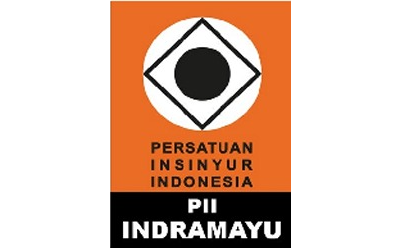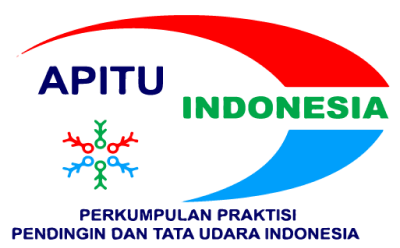MODEL SUPPORT VEKTOR MACHINE (SVM) BERDASARKAN PARAMETER WINDOWS UNTUK PREDIKSI KEKUATAN GEMPA BUMI
Abstract
Full Text:
PDFReferences
BMKG. (2021). Data Online - Pusata Database - BMKG. https://dataonline.bmkg.go.id/home
Cecilia Charlene, S. S. H. (2020). Analisis Prediksi Dan Anomali Gempabumi Menggunakan Machine Learning [Institut Teknologi Telkom Purwokerto]. http://repository.ittelkom-pwt.ac.id/id/eprint/6289
Chai, T., & Draxler, R. R. (2014). Root mean square error (RMSE) or mean absolute error (MAE)? – Arguments against avoiding RMSE in the literature. Geoscientific Model Development, 7(3), 1247–1250. https://doi.org/10.5194/gmd-7-1247-2014
Fatimatuzzahra, F., Didik, L. A., & Bahtiar, B. (2020). Analisis Periodisitas Gempa Bumi Diwilayah Kabupaten Lombok Barat Dengan Menggunakan Metode Statistik Dan Transformasi Wavelet. Jurnal Fisika dan Aplikasinya, 16(1), 33. https://doi.org/10.12962/j24604682.v16i1.5717
Ginting, N. Y. I., Novianty, A., & Prasasti, M. T. A. L. (2020). Estimasi Magnitudo Gempa Bumi Dari Sinyal Seismik Gelombang P Menggunakan Metode Regresi Polinomial. eProceedings of Engineering, 7(2).
Jena, R., Pradhan, B., Beydoun, G., Alamri, A. M., Ardiansyah, Nizamuddin, & Sofyan, H. (2020). Earthquake hazard and risk assessment using machine learning approaches at Palu, Indonesia. Science of the Total Environment, 749, 141582. https://doi.org/10.1016/j.scitotenv.2020.141582
Kollam, M., & Joshi, A. (2020). Earthquake Forecasting by Parallel Support Vector Regression Using CUDA. Proceedings - 2020 International Conference on Computing, Electronics and Communications Engineering, iCCECE 2020, 150–155. https://doi.org/10.1109/iCCECE49321.2020.9231137
Mallouhy, R., Jaoude, C. A., Guyeux, C., & Makhoul, A. (2019, Desember 1). Major earthquake event prediction using various machine learning algorithms. 6th International Conference on Information and Communication Technologies for Disaster Management, ICT-DM 2019. https://doi.org/10.1109/ICT-DM47966.2019.9032983
Moraes, R., Valiati, J. F., & Gavião Neto, W. P. (2013). Document-level sentiment classification: An empirical comparison between SVM and ANN. Expert Systems with Applications, 40(2), 621–633. https://doi.org/10.1016/j.eswa.2012.07.059
Noor, A. (2018). Perbandingan Algoritma Support Vector Machine Biasa dan Support Vector Machine berbasis Particle Swarm Optimization untuk Prediksi Gempa Bumi. Jurnal Humaniora Teknologi, 4(1). https://doi.org/10.34128/jht.v4i1.37
Somantri, O., & Apriliani, D. (2018). Support Vector Machine Berbasis Feature Selection Untuk Sentiment Analysis Kepuasan Pelanggan Terhadap Pelayanan Warung dan Restoran Kuliner Kota Tegal. Jurnal Teknologi Informasi dan Ilmu Komputer, 5(5), 537. https://doi.org/10.25126/jtiik.201855867
Tomar, D., & Agarwal, S. (2015). Twin Support Vector Machine: A review from 2007 to 2014. In Egyptian Informatics Journal (Vol. 16, Nomor 1, hal. 55–69). Elsevier B.V. https://doi.org/10.1016/j.eij.2014.12.003
Utomo, D. P., & Purba, B. (2019). Penerapan Datamining pada Data Gempa Bumi Terhadap Potensi Tsunami di Indonesia. Prosiding Seminar Nasional Riset Information Science (SENARIS), 1, 846. https://doi.org/10.30645/senaris.v1i0.91
Wei, H., Wang, M., Song, B., Wang, X., & Chen, D. (2018). Study on the magnitude of reservoir-triggered earthquake based on support vector machines. Complexity, 2018. https://doi.org/10.1155/2018/2830690
Wyss, M. (2014). Earthquake Hazard, Risk and Disasters. In Earthquake Hazard, Risk and Disasters. Elsevier Inc. https://doi.org/10.1016/c2011-0-07007-2
Xiong, P., Tong, L., Zhang, K., Shen, X., Battiston, R., Ouzounov, D., Iuppa, R., Crookes, D., Long, C., & Zhou, H. (2021). Towards advancing the earthquake forecasting by machine learning of satellite data. Science of the Total Environment, 771, 145256. https://doi.org/10.1016/j.scitotenv.2021.145256
Xu, C., Dai, F., Xu, X., & Lee, Y. H. (2012). GIS-based support vector machine modeling of earthquake-triggered landslide susceptibility in the Jianjiang River watershed, China. Geomorphology, 145–146, 70–80. https://doi.org/10.1016/j.geomorph.2011.12.040
Yang, D. H., Zhou, X., Wang, X. Y., & Huang, J. P. (2021). Mirco-earthquake source depth detection using machine learning techniques. Information Sciences, 544, 325–342. https://doi.org/10.1016/j.ins.2020.07.045
Yousefzadeh, M., Hosseini, S. A., & Farnaghi, M. (2021). Spatiotemporally explicit earthquake prediction using deep neural network. Soil Dynamics and Earthquake Engineering, 144, 106663. https://doi.org/10.1016/j.soildyn.2021.106663
DOI: https://doi.org/10.31884/jtt.v8i1.352
Refbacks
- There are currently no refbacks.
Copyright (c) 2022 JTT (Jurnal Teknologi Terapan)

This work is licensed under a Creative Commons Attribution-NonCommercial-NoDerivatives 4.0 International License.
 Creative Common Attribution-ShareAlike 4.0 International (CC BY-SA 4.0)
Creative Common Attribution-ShareAlike 4.0 International (CC BY-SA 4.0)














